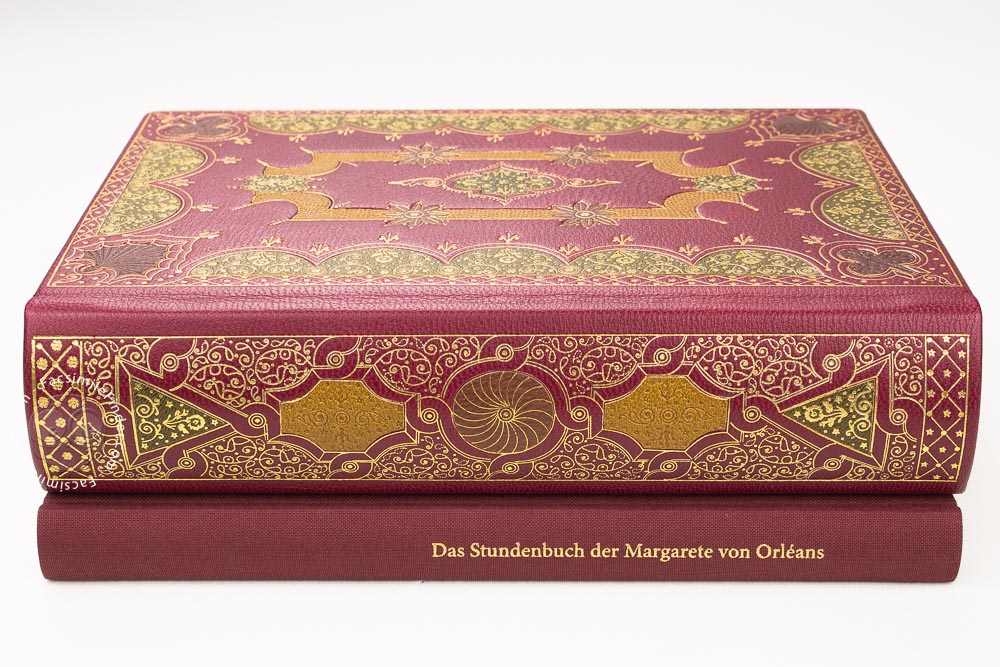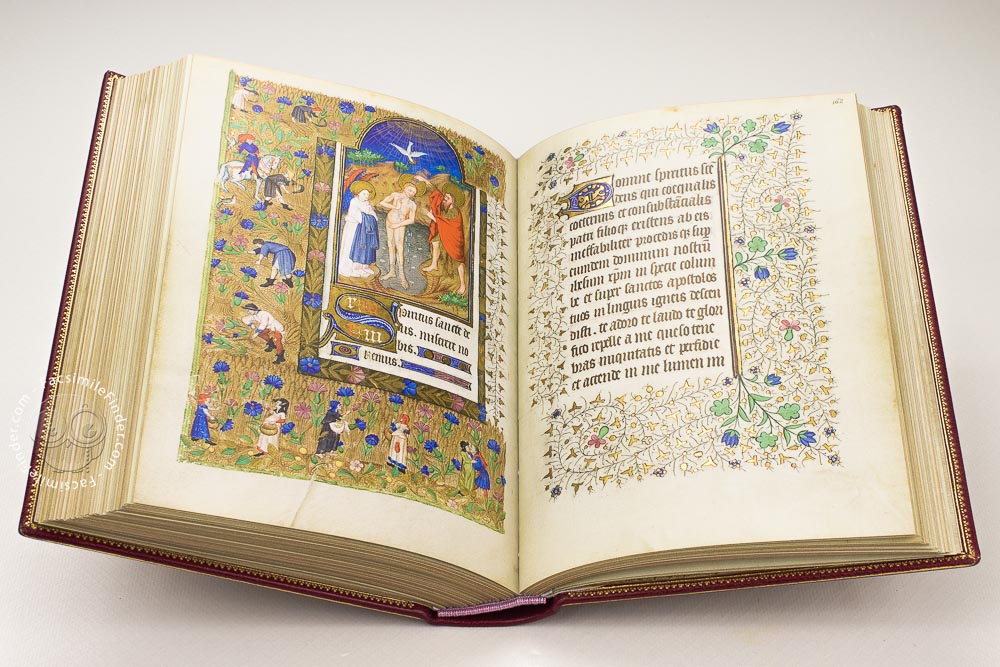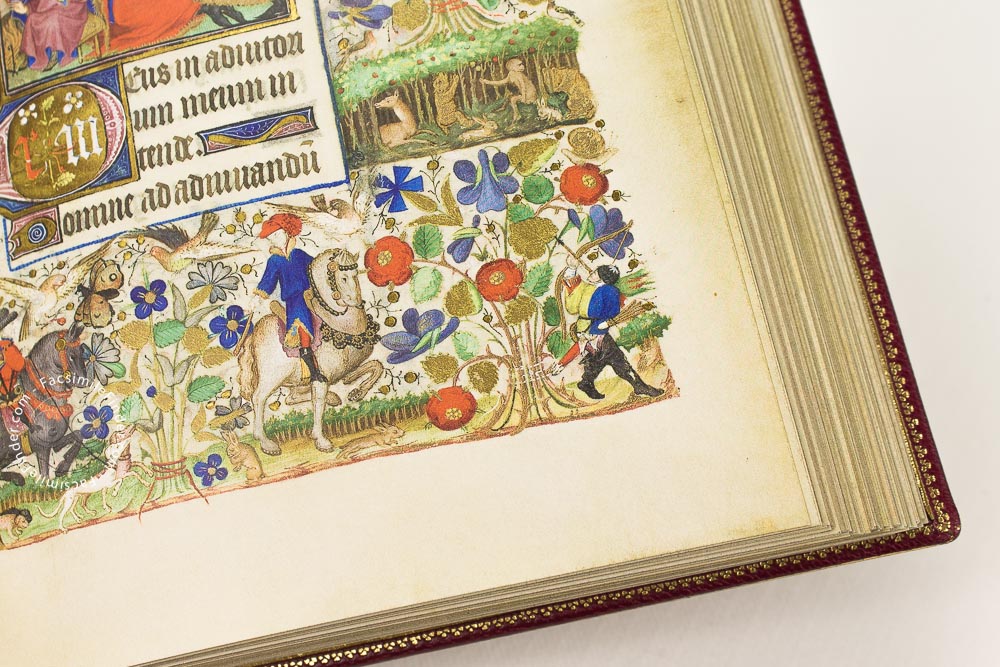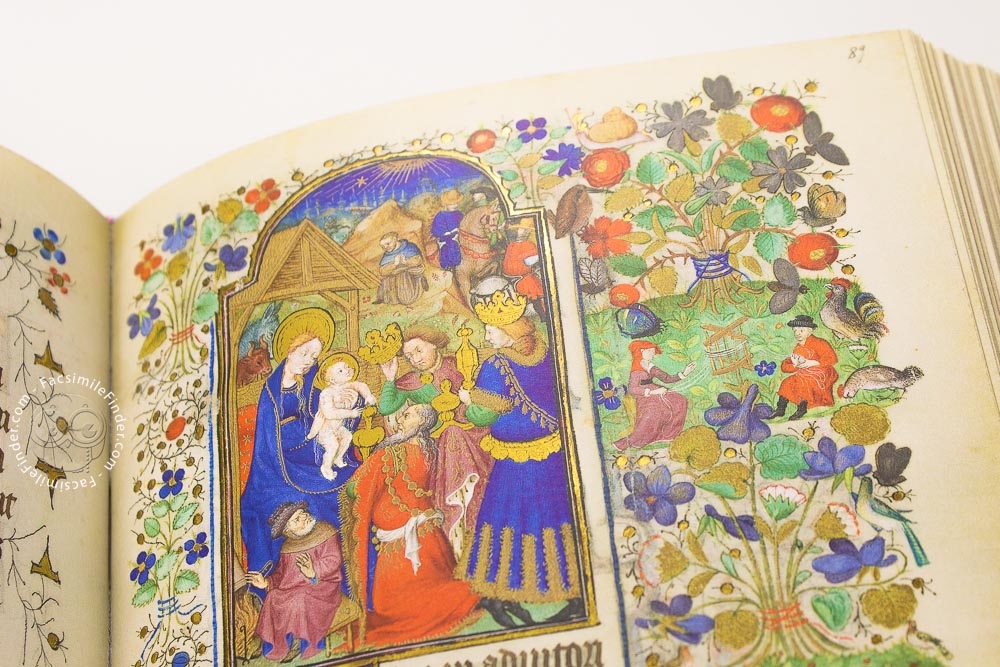The Book of Hours of Marguerite d’Orléans facsimile (Das Stundenbuch der Margarete von Orléans), a fantastic edition by Quaternio Verlag Luzern, is now available for collectors and libraries.
The French masterpiece in facsimile is now published, and stunning
Announced by Quaternio Verlag Luzern at the end of 2012, the Book of Hours of Marguerite d’Orléans (original publication title: Das Stundenbuch der Margarete von Orléans) is now available.

After a year of work, the publisher is able to deliver a majestic edition, with the highest standard of quality. The Book of Hours of Marguerite d’Orléans is cased in an elegant acrylic box, together with the German commentary. An English abstract, detailed and beautifully printed, accompanies the edition.
A wealth of 41 miniatures of the highest quality enrich the 105 folios
Readers leafing through the Book of Hours of Marguerite d’Orléans will witness the full Medieval world in front of them. The variety of depictions from every-day life and the shining colors are enchanting. A wealth of 41 miniatures of the best quality enrich the 105 folios measuring 20.7 × 15 cm. In addition there are 24 calendar medallions framed in gold, and 42 historicized borders, featuring a panorama of the fifteenth century in its many different facets.

The French Royal Family: a history of love for books
Marguerite d’Orléans (1404-1466) was part of the French aristocracy. She was descendant of the French king, Charles V, and of Jean, Duc de Berry. Charles V’s book collection constituted the foundation of the Bibliotheque Nationale de France, while the Duc de Berry is considered the greatest bibliophile of the Middle Ages. Marguerite must have inherited the love for books of her famous predecessors.
Book of Hours of Marguerite d’Orléans: a gift for her wedding?
In 1426 Marguerite d’Orléans married the Duke of Brittany, Richard d’Etampes. That same year the duke commissioned the creation of a book of hours that may have planned to give to Marguerite as a wedding gift. The book contains many images of the partners coats-of-arms, their monogram,”r&m” in almost all of the initials, and a portrait of Marguerite praying to the Virgin Mary
Brilliant Gold Illuminations and Uncommon Borders
The 41 miniatures in the main section and the original borders – all ornamented in brilliant gold or delicate silver – were painted around 1430. They are all from the hand of the “Master of Marguerite d’Orléans” famous today because of this masterpiece. In the 1450s Marguerite d’Orléans had her book of hours updated according to the taste of the times. Etienne Sauderat, from the circle of the Bedford Master, added a welath of decorative elements.

The Boucicaut Master and the Limbourg Brothers: role models for the Book of Hours of Marguerite d’Orléans
The Master of Marguerite d’Orléans probably studied in Paris in the circle of the Boucicaut Master. He adapted numerous of the Boucicaut Master’s stylistic elements to his own style. His first work took him to Bourges, where one the Limbourg brothers workshop was located. Indeed, there’ no doubt that the Book of Hours of Marguerite d’Orléans bears influences of the work of the Limbourg brothers.
The Middle Ages in a book: a Great Deal of Scenes Represented in the Borders
The 41 images from the New Testament and the depictions of the saints are some of the most beautiful of the time. The borders make the Book of Hours of Marguerite d’Orléans one of the most peculiar witness to feudal life around 1430. Scenes from the Old Testament do not appear in medieval guise. Instead, the illuminator’s imagination never fails to portray the most diverse facets of medieval life in an interesting manner: knights prove themselves in tournaments and in battle; pilgrims travel to Santiago de Compostela; grapes are grown on trellises; birds caught and deer hunted; wheat is harvested and ships are unloaded in the harbor.



